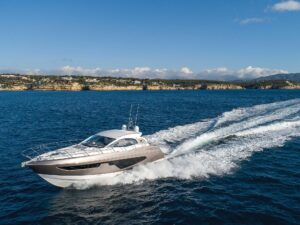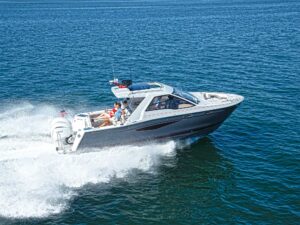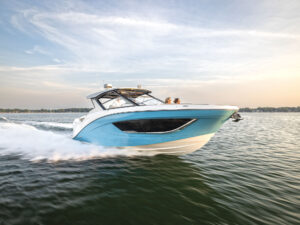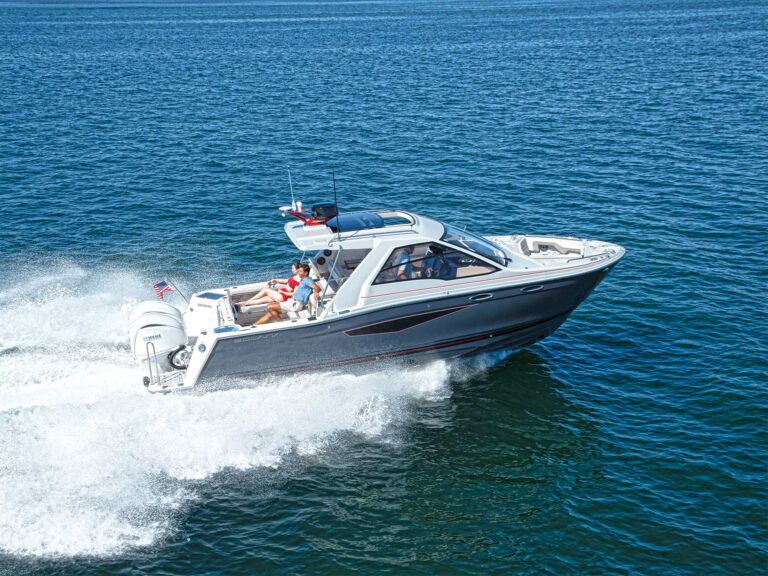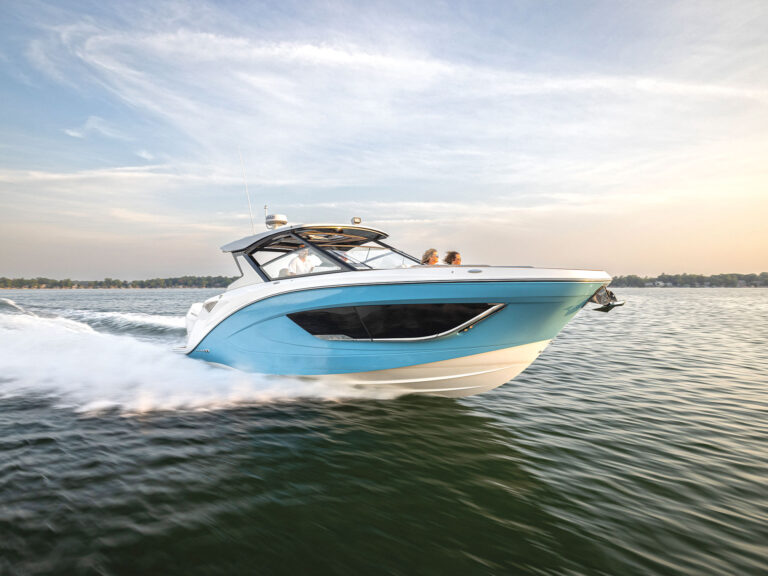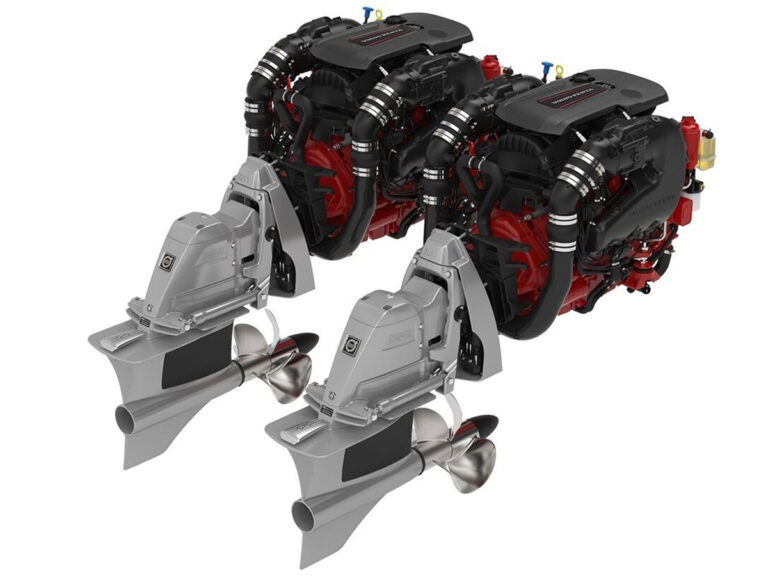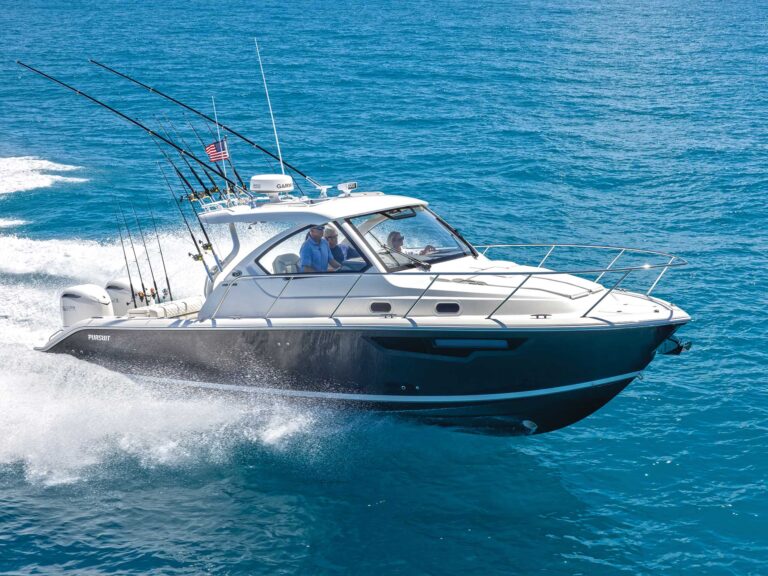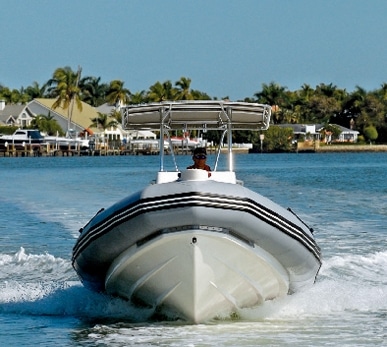
Soft Science: RIB vs V
If you wanted to design a boat to have the softest possible ride, the best shape would be a ball. Of course, standing up in it would be tricky, you wouldn’t be able to go too fast, and steering would be difficult, to say the least. Which is why after more than a hundred years or so of history with planing hulls, we’ve reached the best compromise: the deep-V hull. Since the late 1950s it has stood as the softest-riding, most practical boat design. Ask owners, builders, designers, racers, anglers, or anyone with powerboat experience in rough water-the consensus will be that for a soft ride, deep-Vs rule.
Yet, there are heretics. Catamarans came on strong during the 1990s and continue to thrive. Twin hull advocates wouldn’t trade them for any of Ray Hunt’s (the inventor of the deep-V) offspring, no matter what you offered. Round bilged displacement hulls have their devotees, too. Though most of us aren’t willing to creep along at 8 mph just for the sake of comfort.
Then there are the variants of the classic 24-degree deadrise at the transom deep-V. Laterally stepped deep- Vs such as those built by Intrepid and longitudinally stepped ones found on old “Potter-built” Sea Crafts both claim improved ride comfort. But the design that makes the strongest claim as being the deep-V adaptation with the best rough-water ride on one hull belongs to the RIB, or rigid-hulled inflatable. Its designers claim that mating a narrow lightweight deep-V hull with a water-smoothing air-cushioned collar produces a softer ride than any standalone deep-V out there.
Rather than let so bold an assertion go unchallenged, Boating’s Tech Team hopped aboard two boats that we’ve rated among the softest riding of their types. To represent the deep-V we chose a 29’0″ Regulator 29, and for the RIB, a 27’11” Zodiac Pro 20. We installed G-forcemeasuring accelerometers aboard each boat to keep them honest. You’ll get no vague “soft and dry” or “rides likes it’s on rails” euphemisms in this report. Instead we’ll let our numbers tell the tale.
To paraphrase Da Vinci, those who practice without science are like seamen who steer without a compass, never knowing where they’re going. So keep reading-we won’t steer you wrong.
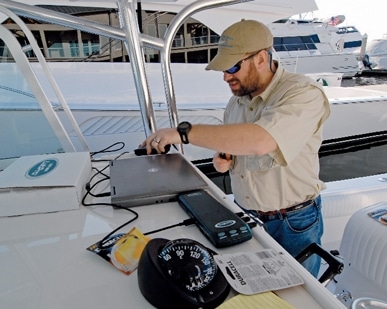
Soft Science: RIB vs V
G Whiz
Technical Editor Dan Long and I are experienced with accelerometers to test for ride quality. We’ve used them before to compare catamarans to deep-Vs. We depend on our trusty Vernier Logger Pro software loaded onto notebook computers aboard each boat to collect and analyze the data. Each computer is fed data from a sensor installed on the centerline just behind the consoles where you’d normally stand. The sensor compiles data from three directions, but we’re only interested in one, the vertical. It’s this motion in which slamming or pounding occurs and makes you feel whether a boat is an old softie or a hard-riding beast.
When a boat moves through the water, it accelerates upward and downward as it encounters waves. This acceleration is measured in Gs. One G is equal to 32′ per second squared, the normal acceleration of a free-falling object. Although we normally think of acceleration as speeding up, the term actually refers to a change in speed. Accelerations can be positive (speeding up) or negative (slowing down). And it’s the negative acceleration expressed in G force that we’re concerned with. A boat that slows down faster as it hits a wave rides harder and will post a higher G force value than one that slows down slower-easing itself into the water.
Our test procedure consisted of running the boats next to each other several yards apart at 25, 30, and 40 mph. By doing so we tried to ensure that both boats hit the same waves at the same time. We ran these speeds in three different directions: into the waves, with the waves, and across the waves. We did so for 60 seconds at every speed, giving us enough time for the accelerometers to deliver tens of thousands of data points and a good picture of how each boat performed.
Before revealing the results, let me say that the ride quality of these two boats was so close that at 25 mph the graphs showed no noticeable difference. Therefore, we only used the data collected at 30 and 40 mph. For it was only at these higher speeds that we could begin to make a useful comparison.
Into, Across, and With
Sea conditions in the Gulf of Mexico on test day were 10-knot winds with a gentle 2′ swell. Not exactly ideal. The average boater would be hard-pressed to feel any differences between the two boats as the impacts are slight. But our equipment is so sensitive and accurate that it had plenty to work with. Unfortunately, these conditions wouldn’t allow us to compare “off-axis” wave impacts, which is purportedly one of the key benefits of a RIB.
According to John Hale, Zodiac’s director of engineering, “In rough water, it’s likely that a boat won’t always hit with the hull perpendicular to the wave’s surface.” In other words, the keel isn’t going to be slicing the wave at its most ideal angle, which is head on. Hale goes on to explain that “a boat can easily hit a wave at an oblique angle, thereby reducing the effectiveness of its deadrise. For example: If a boat has a deadrise of 24 degrees and lands on a wave heeled over by 10 degrees, the resultant effective deadrise [what the wave meets] is only 14 degrees.” And naturally landing on that 14-degree bottom will feel a lot harsher than landing on a 24-degree bottom.
This is a problem most of us have experienced, regardless of the type of boat-unless it was a RIB . Hale asserts that a RIB’s inflatable collar absorbs a lot of the off-keel impact. This notion rings true to those of us who have ridden in RIBs. But it’s a ride quality that today’s calm conditions can’t confirm.
We started by running into the waves at 30 mph. Here the deep-V’s ride proved softer, posting only a couple of small G values that averaged 0.14 and maxed at 0.16. The RIB ‘s impacts averaged 0.32 and peaked at 1.03. So the deep-V hull rode better at this speed.
However, things changed at 40 mph riding into the waves, with the RIB being softer. Peak values for the deep-V were 0.56, compared to 0.48 for the RIB-a negligible difference. But the RIB’s average G value was only 0.11, or one-third the impact felt by the deep-V, which averaged 0.33.
Running in following seas at 30 mph, the deep-V hull won handily, posting only one G value of 0.11. The RIB peaked at 1.2, and scored several values, averaging 0.51.
After throttling up to 40 mph in following seas, the deep-V won again, posting G impacts on only two waves (0.06 and 0.09). The RIB regularly posted G force values, which averaged out to 0.68, peaking at 1.2 for one wave.
In beam seas at 30 mph the deep-V posted one slamming 0.81 impact. Although the RIB banged several times, it averaged only 0.67, which was less than the single bumpy hit by the deep-V.
At 40 mph with waves abeam the story was about the same. While the deep-V posted a total of four values-the peak one being 0.21-it averaged 0.09. The RIB posted 17 values during the same period, with a maximum 2.1 and averaged 0.76.
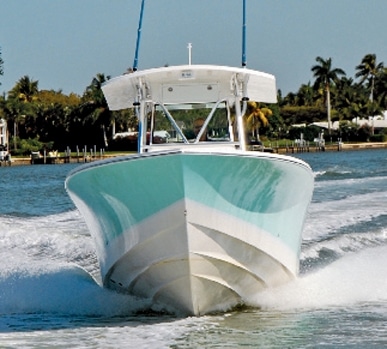
Soft Science: RIB vs V
Not That Simple
When we got back to shore and compared the data for the six runs (two speeds in three directions), what was immediately obvious was how low the numbers were. Both boats rode extremely well.
But the differences between them, no matter how small, told a story. The deep-V was the better of the two going down sea and across the waves. Going into the waves-the touted head-sea ride by which many of us judge a boat-the deep-V rode softer at 30 mph but was surpassed by the RIB as speeds increased.
Running into waves is the toughest course and produces the roughest ride. One reason is wave shape. Driving into an oncoming wave forces the boat to meet the wave’s steep face rather than its more rounded back. Speed and time also come into play. A wave moving at you adds its speed to yours, increasing the impact. Plus the boat has less time to react. It comes off one wave and sinks into the next wave. Before the boat can become buoyant enough to lift itself so it can present its keel and stem to the next wave, that oncoming wave is already there. These are situations you won’t experience when running down sea or when the waves are on your beam.
Any deep-V should do well punching into a wave. Its high deadrise doesn’t just affect bottom shape, the stem and forefoot (the boat’s “entry”) are also finer than the blunter bow of a modified-V. This sharp bow penetrates the water easily and then slows the impact. Why? The widening flare of the bow makes the boat more buoyant the farther it sinks.
A RIB hits an oncoming wave slightly differently, in a way that noticeably softens its ride at high speeds. As its bow digs in, the air collar makes contact, absorbing some of the impact by lifting and deforming slightly to further slow the deceleration. A RIB’s hull is also narrower (the collar isn’t in the water when underway), and a skinny hull rides softer than wide one because it presents less area for the water to hit.
On the other hand, RIBs tend to be lighter than conventional fiberglass boats, which may not help their ride. The Regulator 29 displaces about 6,800 pounds whereas the Zodiac Pro 20 comes in at less than half- around 2,976 pounds. In general, the object with more mass accelerates (and decelerates) slower. The result: You feel less impact.
Regulator’s designer, Lou Codega, simplifies the concept by asking us to consider two identical balls that can float: one light, the other heavy. If you drop them into a tank of water both will hit at the same speed. But the lighter ball won’t sink in as far, and it begins its upward motion sooner than the heavier one. It has faster (greater) negative accelerations.
And Another Thing…
Our tests focused on ride quality as measured in vertical accelerations, what is typically called “slamming” or “pounding.” By necessity, our procedures and parameters were limited.
For example, accelerometer testing conducted by the U.S. Navy uses trial times measured in hours rather than minutes. They measure wave speed and period and can wait for a day of perfectly snotty weather when the sea state is high and well defined. Sure, our gentle swell test is a good indication of how a boat will ride, but it might not pass muster with an MIT-trained naval architect.
Also, anyone buying a boat should consider the other aspects important to ride. Stability, heave, roll period, and pitching are just some of the characteristics that also determine how comfortable and secure you will feel.
But based on our singular concern for this test, that of pounding, we can definitely conclude that our deep-V produced a softer ride running down sea, in a beam sea, and in a head sea at moderate speed. But at higher speeds in a head sea, the RIB pounded less.

